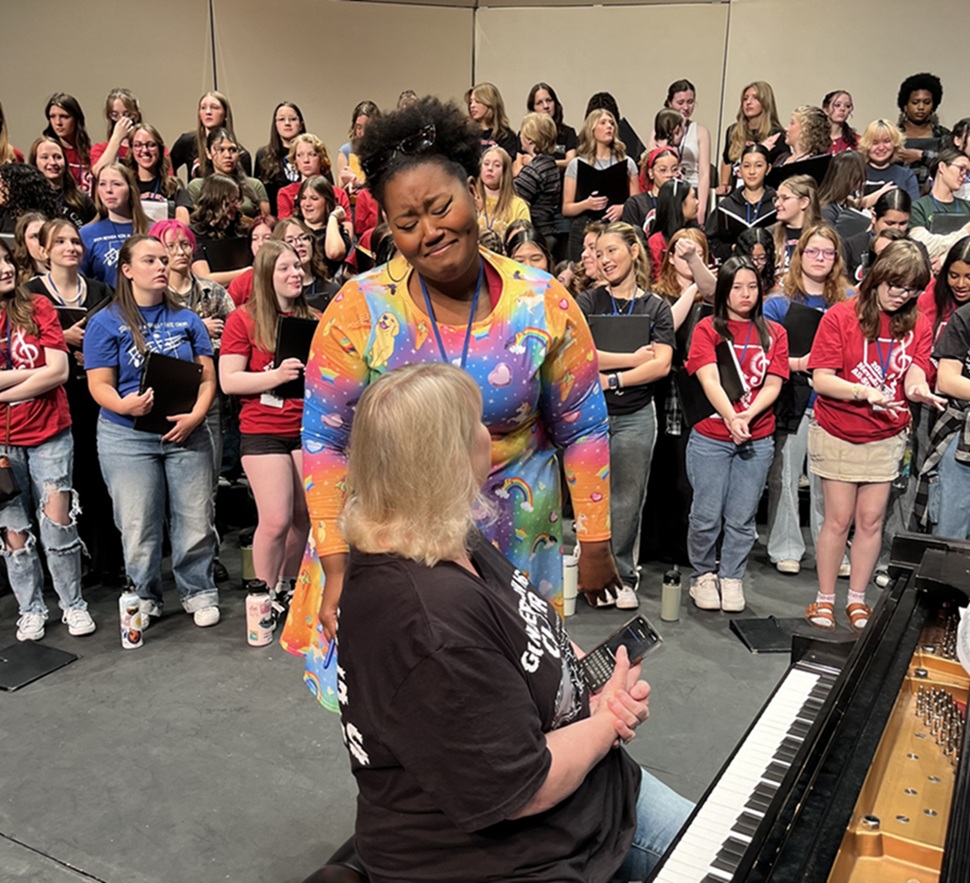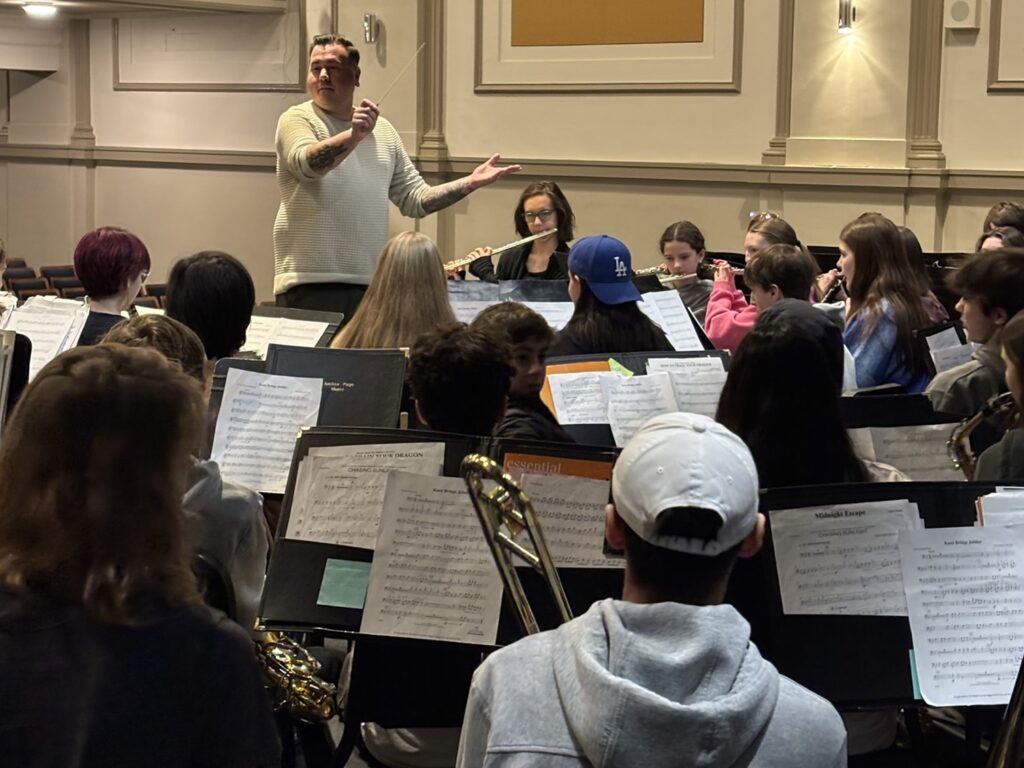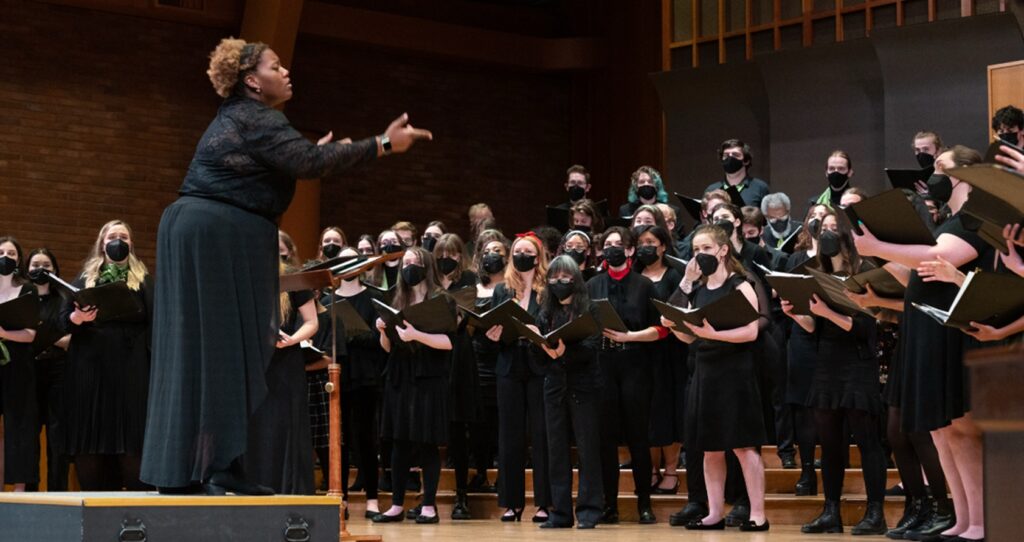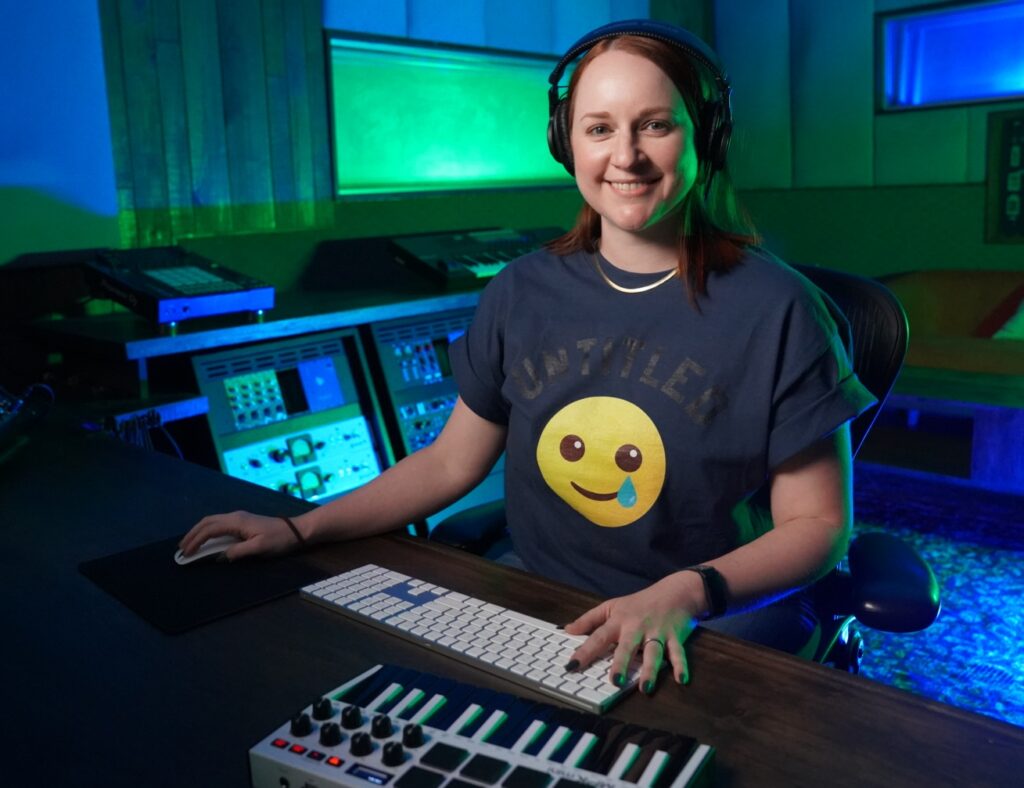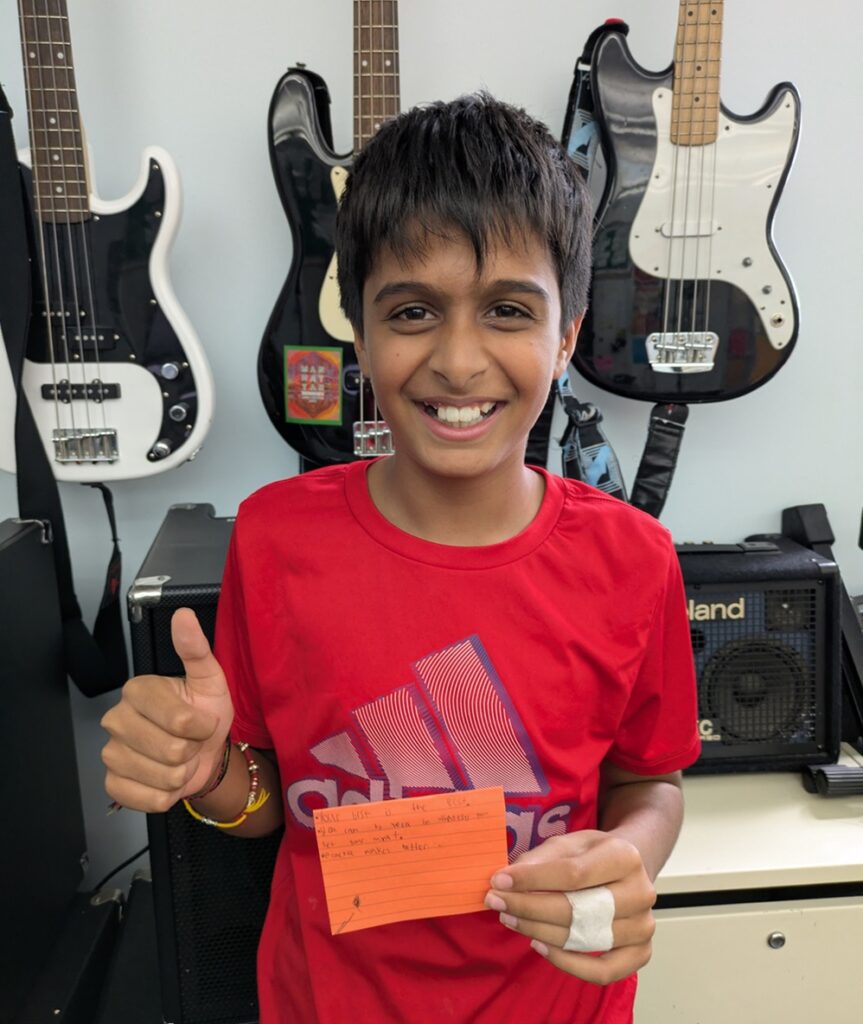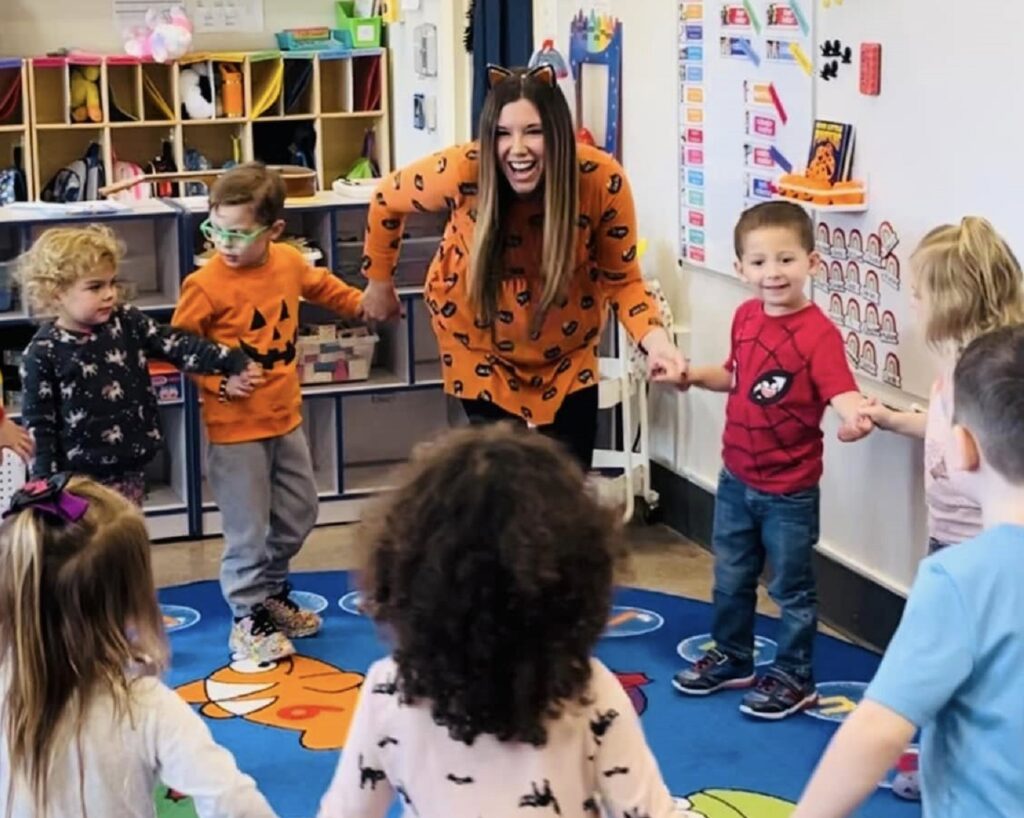Tagged Under:
General Music for Non-Musicians
A Tennessee high school music educator designed a curriculum for students with no musical experience, and by the end of the school year, they were reading music, playing instruments and performing.
When asked what he does for a living, Jacob Abbott answers, “Ever see the movie ‘School of Rock’? … I’m basically Jack Black.” One of the reasons Abbott made the 2025 Yamaha “40 Under 40” list is because he built the General Music curriculum at Dresden High School in Tennessee to cater to students with no musical experience, and the applause has been deafening.
Dresden is 121 miles northeast of Memphis and the 2020 census recorded a population of 3,019. Enrollment at Dresden High hovers around 330 in grades 9 through 12. When Abbott started at the school 10 years ago, it wasn’t that the music program wasn’t popular — it was practically nonexistent.
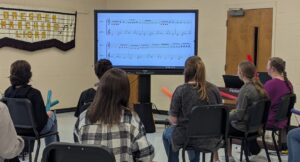
Bleak Beginnings
“There were two sections of vocal classes, and the kids didn’t even like each other. If there was a concert or performance, there was no guarantee that the students would show up,” recalls Dresden’s Director of Performing Arts.
The Intro to Fine Arts graduation requirement at the time covered music, theater and visual arts with each component given 12 weeks of instruction. Abbott had no acting experience and had to tutor himself in visual arts. “I just thought, let’s get through the 12 weeks and keep making it better. I was afraid the talented students would be hindered,” he says of the constant refining of curriculum to make up for his lack of mastery in theater and visual arts.
At the same time, there was no art or music curriculum for middle school students, ensuring that whatever they may have absorbed in elementary school had evaporated. “Students came to high school basically as clean slates. Seniors had not done music for longer than they actually did music,” notes Abbott.
For the most part, students went to class because it was a requirement. Hardly inspirational or motivational.
From that humble beginning Abbott built a legitimate choral program. Step by step, revamping what didn’t work and pushing further on what did. Taking a cue from his science teacher wife, who told him, “Students love lab day, it’s fun,” the father of three incorporates as much hands-on experience as possible in his classroom.
Knowing a curriculum is worthless if there aren’t students to teach keeps Abbott in recruiting mode. Middle schools are an obvious start. He has developed relationships with music teachers and keeps developing them, along with visiting middle school classrooms and issuing invitations to visit his class at the high school and attend student concerts.
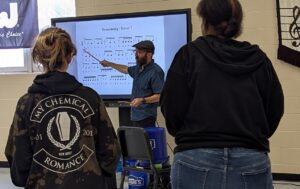
New Standards, New Opportunities
In 2016, the state of Tennessee overhauled its educational standards. In 2019, the changes were implemented, and the previous Intro to Fine Arts requirement became a choice of one credit of music, theater or visual arts, necessitating turning the previous 12-week curriculum of music into a 180-day one.
Before the new state standards, Abbott had about 22 students in each of his four sections. Today, his 2-3 music classes average eight students because enrollment is competing with theater and visual arts. The smaller class size allows for individual attention. Abbott considers himself “lucky” if he has freshmen and sophomores in class as opposed to seniors who are typically there only for the graduation credit. Underclassmen learn for themselves, and a spark of interest may have them pursuing more music classes.
The General Music class begins the school year with learning to read music so students can appreciate what musicians do. Using “Sing at First Sight” by Andy Beck, a textbook geared for those who have never read music before, Abbott guides rhythm and pitch exercises to achieve and reinforce music literacy. He also uses its companion book for basic rhythm and solfège, a mnemonic device for aural skills.
“[Learning to read music is] a slow process — two weeks, maybe three,” Abbott says. “It could go faster but it’s better to build a strong foundation for later in the year.”
“Body Jams” by Murray Houlif, “Wham Bam Bucket Jams” by Hunter Stricklin and “Give Me a Bucket” by Mark Shelton provide exercises for body percussion — high note is a clap, low note is a foot stomp, rhythm is left to right — and for percussion/rhythm instruments like 5-gallon buckets or plastic trash cans arranged in a drum circle. While students are learning to read music, they also are getting comfortable with performing.
“Students perform no matter the time of year. It’s less threatening. When they practice performing all year, it takes the scary away,” says Abbott.
During the academic year, there may be a flash mob in the cafeteria, an Instagram post of rehearsal, risers in the classroom or a school-wide announcement inviting students and staff to listen and watch. Performances also serve as an excellent recruitment tool.
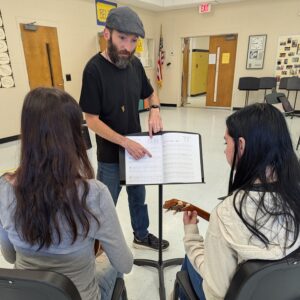
Introduction to Instruments
The week before fall break, students are introduced to do-re-mi or solfège. “So, they know what the music sounds like before they hear it,” says Abbott. Learning the piano follows.
Abbott chose the piano because of its general accessibility and it is a good basis for other instruments. He stumbled on the Mayron Cole Piano Method: Older Beginners, which he says is fantastic — plus it’s online and free. The teacher and students do the first 10 pages together, then it’s self-paced, as long as the students are making forward momentum.
“Thanksgiving week is good for Boomwhackers® because we only go to school on Monday and Tuesday,” says Abbott. Boomwhackers are lightweight, hollow, color-coded, plastic tubes, tuned to a musical pitch by length.
After winter break, it’s back to the piano. Then it’s the ukulele. Students begin with picking out tunes and finger functions. “Ukulele is a simple instrument, so they already know how to read the primary notes, and they can do duets with chords and melodies,” explains Abbott, who uses “Alfred’s Basic Ukulele Method: Book 1” by Ron Manus & L.C. Harnsberger as a textbook.
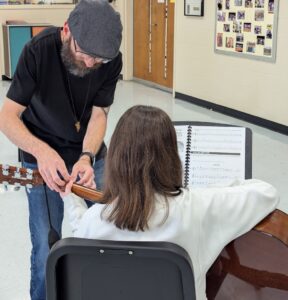
Guitar follows the ukulele because the same hand shapes are used for both instruments. He pulls from “Hal Leonard Guitar Method” by Will Schmid & Greg Koch for lessons, using most of book one and supplementing portions from books two and three as needed. “Students learn full chords (4/5/6 strings) and power chords (2/3 strings). And yes, power chords are used in heavier styles of music like classic rock, punk, alternative, etc.,” reports Abbott.
Guitar lessons include acoustic, electric and a day for bass. “Eyes light up, oh that’s cool,” Abbott describes reactions to turning up amps and turning on distortion. “Students can hear not just one genre. This way is country, this way is something, but they’re all the same thing.”
The playlist includes staples like “Old Time Rock & Roll” by Bob Seger, Darius Rucker’s “Wagon Wheel,” “Country Roads” by John Denver, “I Gotta Feeling” by Black Eyed Peas and the Cranberries’ “Zombie.”
In all, instruction includes roughly six weeks of piano, four weeks of ukulele and four or fewer weeks of guitar. The General Music class is no longer a prerequisite for Abbott’s other music classes — Choir, Modern Band/Contemporary Ensemble and Traditional Band. Due to the success of the high school music classes, Dresden Middle School now employs a full-time music teacher for general music and beginner band classes. Incoming freshmen are now able to join their preferred ensemble with the necessary skills to be successful immediately.
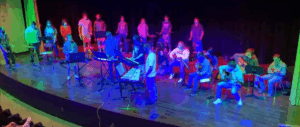
Defining Success
After spring break when testing kicks in at Dresden High, music students are preparing for their end-of-year performance held during the school day on the last day of regular classes. Abbott doesn’t push for an outside of school day performance because many students have jobs and seniors need the credit — just another way to make music available to all. He does the lighting for student concerts and whatever needs to be done, explaining it keeps his chops up, and he has the most fun playing along with the students especially the blues, his favorite genre.
The word about Abbott’s General Music classroom success has spread. Educators seek his advice. He happily shares his knowledge, suggesting guests bring an empty binder so he can fill it with notes, references and resources. He also has been approached to publish his full curriculum, which may have to wait because in June 2025, Abbott began working on a master’s degree in Instrumental Conducting through the University of Tennessee at Martin.
Other goals for his future are the same ones posted in his classroom:
- Learn something new every day.
- Improve every day.
- Have fun every day.
In that order.
Abbott’s musical journey started in 6th grade when he decided to try band. He almost quit before high school because it looked like he wouldn’t have the opportunity to play percussion, his preferred instrument. Thankfully, Abbott’s mother intervened and talked to the high school band director. Being a high school percussionist sealed the deal for Abbott — he decided he was going to be a band director. Giving students the same opportunity he had to learn music is what motivates him.
“If I can grow them into complete musicians, I’ve done my job,” sums up Abbott. “I let them know ‘I’m just facilitating this for you. You are going to sound good.’”










